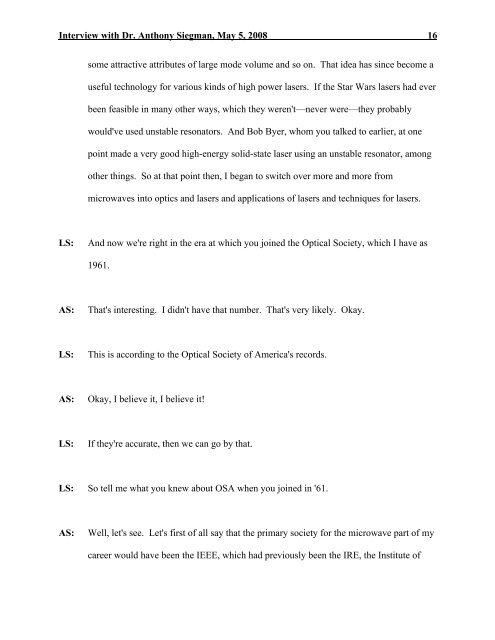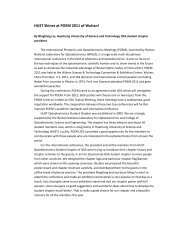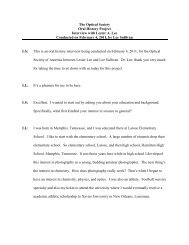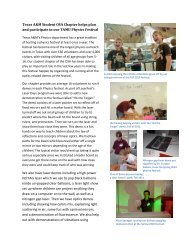The Optical Society Oral History Project Interview with ... - OSA
The Optical Society Oral History Project Interview with ... - OSA
The Optical Society Oral History Project Interview with ... - OSA
Create successful ePaper yourself
Turn your PDF publications into a flip-book with our unique Google optimized e-Paper software.
<strong>Interview</strong> <strong>with</strong> Dr. Anthony Siegman, May 5, 2008 16<br />
some attractive attributes of large mode volume and so on. That idea has since become a<br />
useful technology for various kinds of high power lasers. If the Star Wars lasers had ever<br />
been feasible in many other ways, which they weren't—never were—they probably<br />
would've used unstable resonators. And Bob Byer, whom you talked to earlier, at one<br />
point made a very good high-energy solid-state laser using an unstable resonator, among<br />
other things. So at that point then, I began to switch over more and more from<br />
microwaves into optics and lasers and applications of lasers and techniques for lasers.<br />
LS:<br />
And now we're right in the era at which you joined the <strong>Optical</strong> <strong>Society</strong>, which I have as<br />
1961.<br />
AS:<br />
That's interesting. I didn't have that number. That's very likely. Okay.<br />
LS:<br />
This is according to the <strong>Optical</strong> <strong>Society</strong> of America's records.<br />
AS:<br />
Okay, I believe it, I believe it!<br />
LS:<br />
If they're accurate, then we can go by that.<br />
LS:<br />
So tell me what you knew about <strong>OSA</strong> when you joined in '61.<br />
AS:<br />
Well, let's see. Let's first of all say that the primary society for the microwave part of my<br />
career would have been the IEEE, which had previously been the IRE, the Institute of







